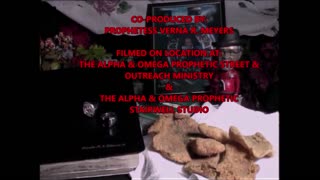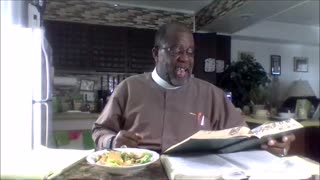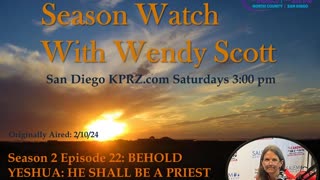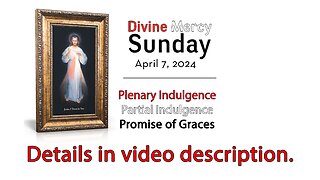Episode 1266: 25th Sunday after Pentecost
The Epistle and Gospel readings for the 25th Sunday after Pentecost:
Epistle: 2 Thessalonians 2:13-17
13 Therefore, brethren, stand fast, and hold the traditions which ye have been taught, whether by word, or by our epistle.
14Now our Lord Jesus Christ himself, and God, even our Father, which hath loved us, and hath given us everlasting consolation and good hope through grace,
15 Comfort your hearts, and establish you in every good word and work.
16 And we entreat you, brethren, by the coming of our Lord Jesus Christ, and by our gathering together unto him;
17 That ye be not soon shaken in mind, or be troubled, neither by spirit, nor by word, nor by letter as from us, as if the day of Christ were at hand.
In this passage, the Apostle Paul is writing to the Christian community in Thessalonica to reassure them about their salvation and to encourage them to stand firm in their faith.
Paul's gratitude to God
In verses 13-14, Paul begins by expressing his gratitude to God for the Thessalonians' faith and love. He reminds them that God chose them "from the beginning" to be saved, and that he called them "through our gospel" to share in the glory of Jesus Christ. This emphasis on God's choice and calling is a central theme of Paul's letters to the Thessalonians.
The importance of tradition
In verse 15, Paul urges the Thessalonians to "stand firm" and to "hold fast to the traditions" that they were taught, either by word or by letter. This emphasis on tradition is important because it reminds the Thessalonians that their faith is not based on their own whims or opinions, but on the teachings of the apostles.
The power of God
In verses 16-17, Paul prays that God will "comfort your hearts and establish you in every good work and word." This prayer is a reminder that God is always with us, even in times of difficulty. It is also a reminder that we are called to good works and to share the Gospel with others.
Traditional Catholic interpretation
Paul is referring to the sacraments of the Church when he speaks of the "traditions" that the Thessalonians were taught along with referring to the teachings of the apostles, which are preserved in the Scripture and in the Church's Tradition.
Gospel: Matthew 24:27-31
For as the lightning cometh out of the east, and shineth even unto the west: so shall also the coming of the Son of man be.
28 Wheresoever the carcase is, there will the eagles be gathered together.
29 And immediately after the tribulation of those days, the sun shall be darkened, and the moon shall not give her light, and the stars shall fall from heaven, and the powers of the heavens shall be shaken:
30 And then shall appear the sign of the Son of man in heaven: and then shall all the tribes of the earth mourn, and they shall see the Son of man coming in the clouds of heaven with power and great glory.
31 And he shall send his angels with a great sound of a trumpet, and they shall gather together his elect from the four winds, from one end of heaven to the other.
Lets break this down shall we.
The lightning flash: Jesus compares his second coming to a lightning flash that illuminates the entire sky. This signifies the sudden and widespread nature of his return.
The gathered eagles: Jesus uses the analogy of eagles gathering around a dead carcass to emphasize the attention and focus that will be directed towards his second coming. People from all over the world will be aware of and drawn to this momentous event.
The tribulation: Jesus warns of a period of intense tribulation that will precede his return. This tribulation is often interpreted as a time of great suffering and conflict, both personal and global.
The darkening of the sun and moon: Jesus describes cosmic disruptions, such as the darkening of the sun and moon, which will accompany the tribulation. These celestial phenomena are symbolic of the upheaval and chaos that will characterize this period.
The falling of stars and the shaking of the heavens: Jesus further paints a picture of cosmic instability, with falling stars and the shaking of the heavens. These events are seen as signs of the impending judgment and the renewal of creation.
The sign of the Son of Man in heaven: Jesus reveals that his return will be marked by a visible sign in the heavens, likely a celestial event that will signify his glorious descent.
The mourning of the tribes of the earth: At the sight of Jesus' return, all the nations of the earth will be filled with grief and despair. This mourning reflects the recognition of their sins and the judgment that is imminent.
The coming of the Son of Man on the clouds of heaven: Jesus will descend from heaven in a majestic manner, riding on the clouds, symbolizing his divine power and authority.
The gathering of the elect by the angels: Jesus will send his angels to gather his elect from the four corners of the earth, bringing them into his presence for the fulfillment of his promises.
The traditional Catholic understanding of Matthew 24:27-31 emphasizes the sudden, dramatic, and all-encompassing nature of Jesus' second coming. It is a time of both judgment and salvation, a time when the world will be transformed and the Kingdom of God will be fully established.
-
 29:23
29:23
CatholicReboot
7 months ago $0.04 earnedEpisode 1464: 24th Sunday After Pentecost
113 -
 17:07
17:07
CatholicReboot
6 months ago $0.05 earnedEpisode 1665: 26th Sunday after Pentecost
98 -
 58:21
58:21
The Word of God,TJC,S&O Ministry TV
4 months agoBREAKING BREAD WITH THE APOSTLE..SEASON 1...Episode 5, VOL. 1
33 -
 1:36:55
1:36:55
HandinHandwithGodTv
7 months ago20 Questions with Mike Winger (Episode 110)
148 -
 57:56
57:56
The Word of God,TJC,S&O Ministry TV
4 months agoBREAKING BREAD WITH THE APOSTLE..SEASON 1...Episode 5, VOL. 2
51 -
 58:21
58:21
Straight From The Word of God Television Broadcast Station
4 months agoBREAKING BREAD WITH THE APOSTLE..SEASON 1...Episode 5, VOL. 1
60 -
 26:09
26:09
Wendy's Words for Him Radio
4 months agoSeason 2 Episode 22: BEHOLD YESHUA יֵשׁוּעַ: HE SHALL BE A PRIEST UPON HIS THRONE FOREVER
51 -
 14:17
14:17
Scott Stephens TV
5 months agoThey Shall Cast Out Demons Episode 5
46 -
 10:40
10:40
OzarkHunger
3 months agoEpisode 62G Daniel 6
10 -
 18:30
18:30
Our Lady's Chapel
2 months ago $0.07 earnedDivine Mercy (2nd SUNDAY of EASTER) - April 7, 2024 - HOMILY
24